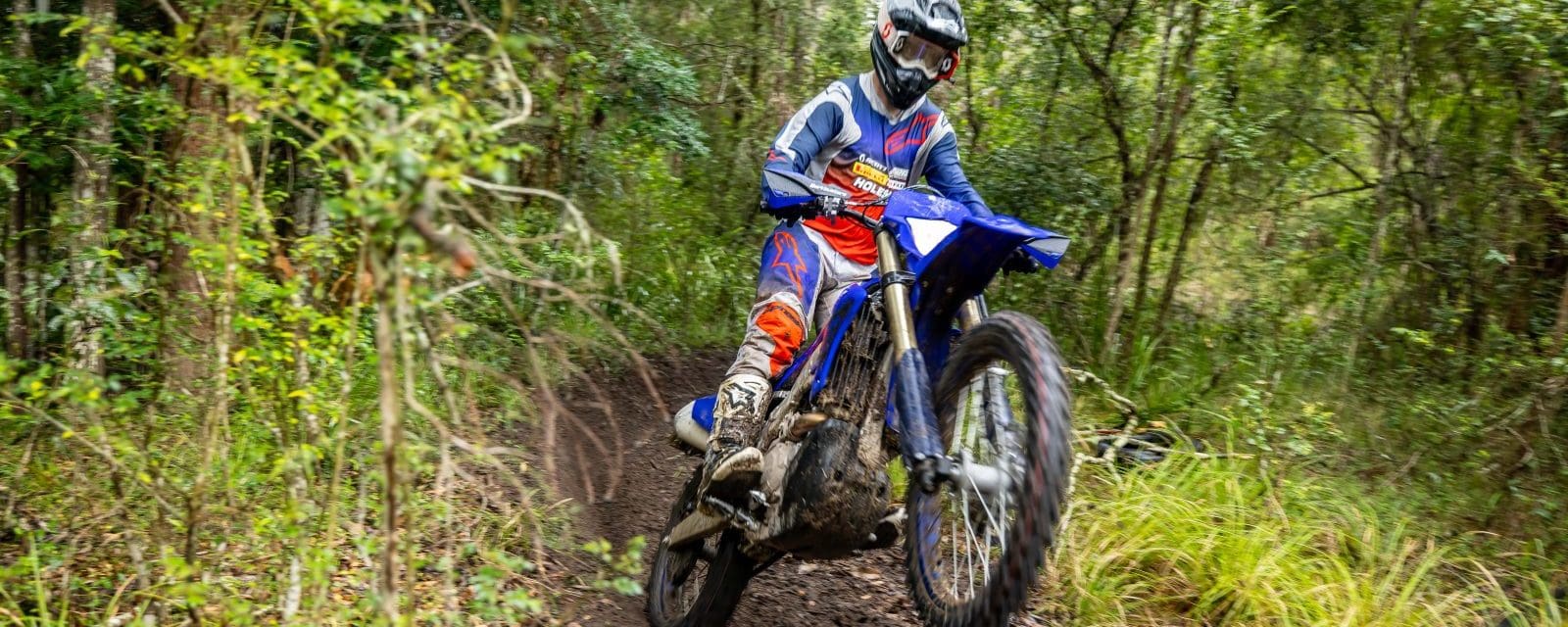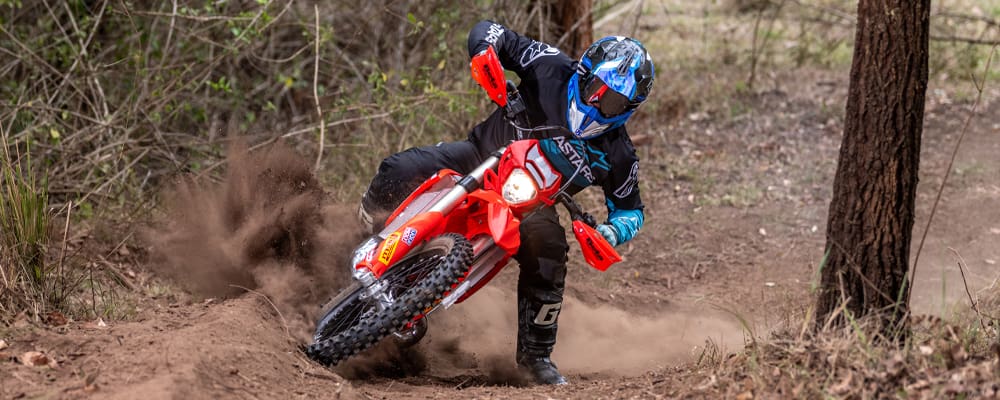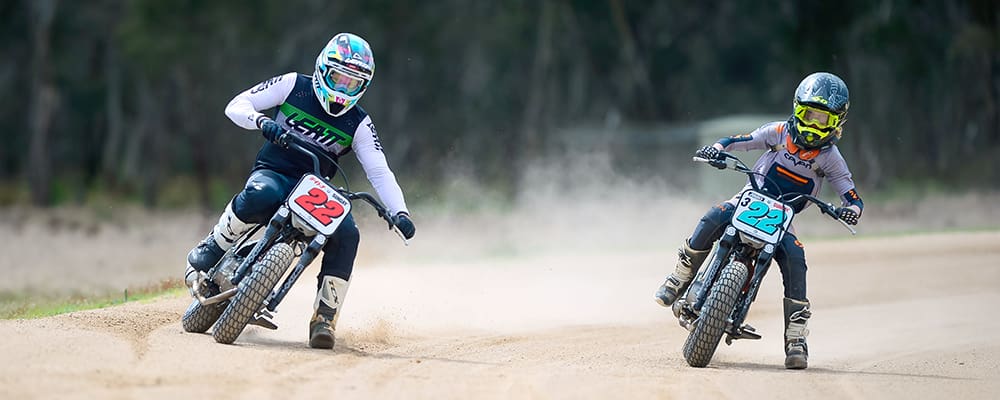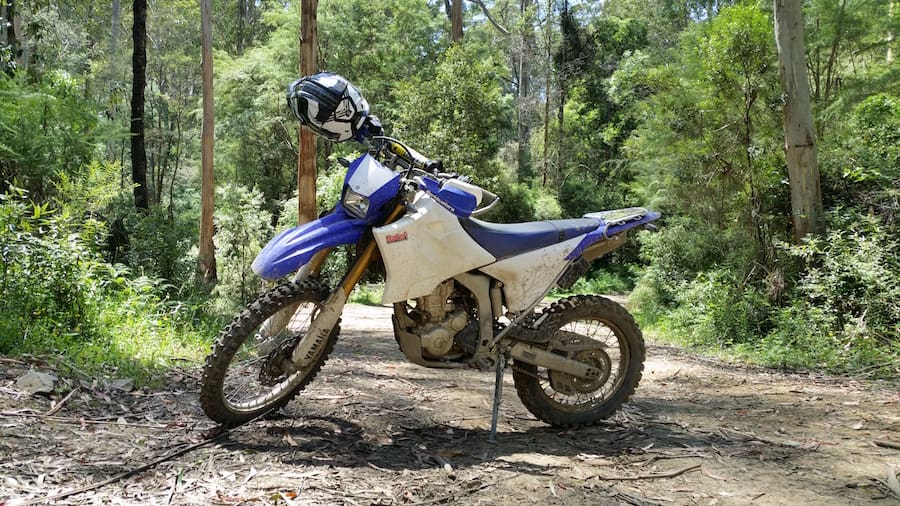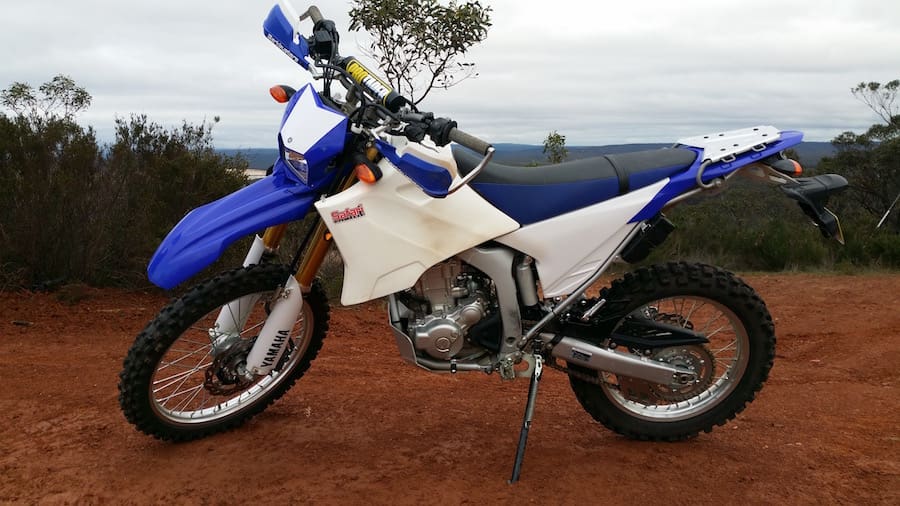Triumph is embarking on one of its biggest challenges since John Bloor rescued the company from receivership in 1983. The launch of its first motocross racer is its first step in creating a family of all-new motocross and enduro models. Triumph’s TF 250-X has arrived at the same time Ducati has released its first motocross racer, the Desmo450 MX.
Both companies are strangers to motocross but in a period of sales growth. Triumph is set to sell more than 100,000 units globally this calendar year while Ducati is experiencing record sales.
Can they shake up motocross like they have roadracing? Recently both brands have assumed important roles in motorcycle racing. In 2019 Triumph went all-in on the racing world, winning the contract to be the sole engine supplier for the Moto2 world championship using its 765cc triple. In 2022 Ducati took the unprecedented step of becoming the sole supplier of bikes competing in the 2023 MotoE World Cup, the electric class of MotoGP. Then in 2021 Triumph shocked the motorcycle world by announcing an off-road racing venture it had never attempted before.
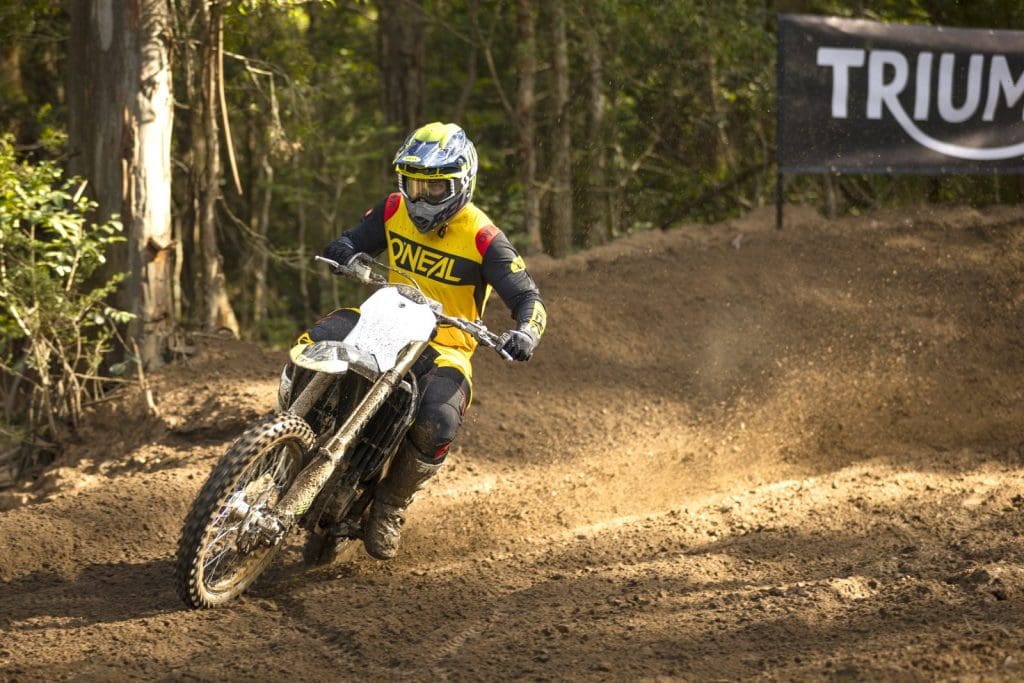
Sure, back in the 1950s and 1960s road Triumphs had been converted for scrambles, desert and ISDE racing but a track-only MXer was a completely new direction for a brand dating back to 1902.
To its credit, Triumph realised it couldn’t go this alone so it enlisted some of the best in the business, including seven-time AMA motocross and five-time AMA supercross champ Ricky Carmichael and five-time enduro champ Ivan Cervantes as test riders.
Triumph admits this project took way longer to reach fruition than it had initially planned but acknowledges it couldn’t release a motorcycle it wasn’t completely happy with.
I can understand that attitude because the fact Triumph had never built a competition-based dirtbike before gave it a free pass to get a few things wrong. Yamaha, Honda and the rest have decades of development behind them to get where they are at today. The acid test is riding this new MXer in its natural environment and, after spending quality time with the new TF 250-X, I believe Triumph has developed a motorcycle in four years that doesn’t just meet its rivals, but even puts a few of them to shame. It leaves me to wonder if Triumph engineers really are that good or if the established manufacturers are resting on their laurels and only doing what they have to?

The Triumph has its own feel. The footpeg and handlebar positions are comfortable but unique – something it obviously worked hard on to achieve. The cockpit doesn’t feel alien, even though it feels very different to anything else on the market. A high-quality Pro Taper handlebar with a carbon core and lock-on grips is fitted as standard – things you generally need to upgrade on a new motocrosser when you get it home.
Its KYB front and rear suspension is regarded in the motocross and enduro scene as being some of the best production units available. The standard suspension is a little on the soft side for my 95kg frame but Triumph has different weight springs available and was able to pair me with a bike that had springs fitted suitable to my weight.
Of course a professional motocross racer is going to like a certain type of set-up, but for the masses the suspension is compliant and set up well. The action is smooth and gradual, but most of all predictable – there is nothing worse than the back end kicking out on you when you aren’t expecting it.
The frame, I was told, was what was holding up the planned release. The test riders weren’t totally happy with it and Triumph needed more time to produce that final percentage of compliancy. The frame geometry gives the stability and compliance you need to go fast. There’s good rider feedback through the footpegs but it still flexes enough to be comfortable and not make the ride feel rigid.
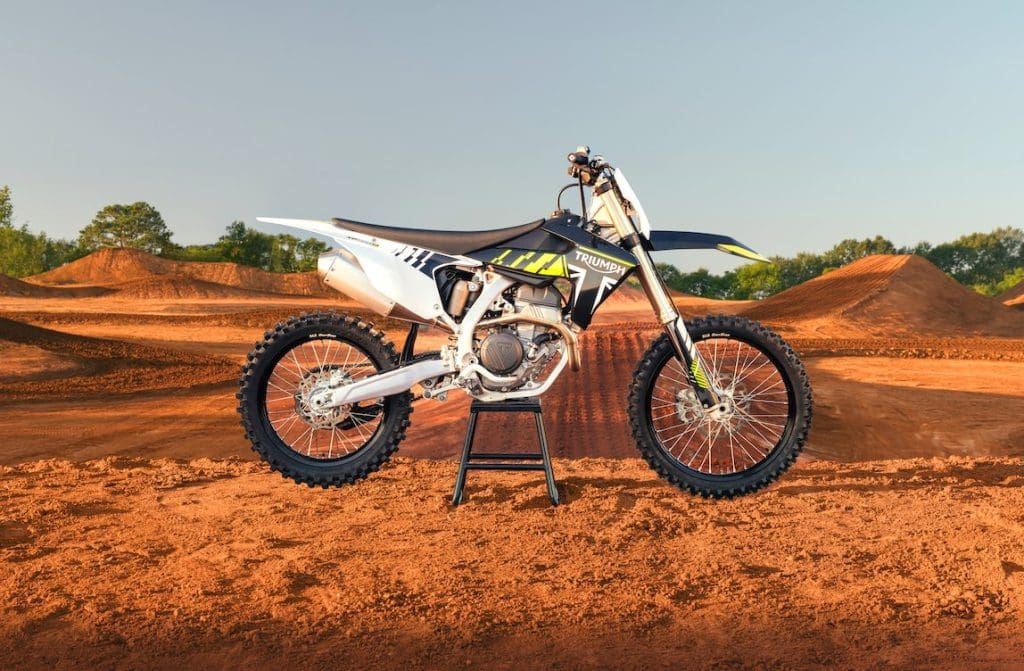
The 249.95cc single-cylinder engine is a top-end monster with a rev ceiling so high you think you’re never going to reach it. Open the taps and the engine revs far past where you think it should but also produces power right through to the end with no sign-offs. The quarter-litre single had no problem getting me over some big jumps. In fact I had to get comfortable revving the bike more and getting used to an engine that can rev.
Stepping off a 450cc machine, where you short shift and use the engine’s torque rather than the rpm, meant I had to spend some time training my brain to use the gearbox to keep the engine above the 8000-9000rpm mark.
This is the way all manufacturers are tuning 250cc four-stroke machines these days. They sacrifice low to mid-rpm torque for higher peak rpm to produce higher horsepower. This is all well and good for European or US tracks, that are much bigger and faster, but tracks in Australia are slower and tighter so we still need bottom-end torque. I reckon Australian-market Triumphs will do better with a 50-tooth rear sprocket instead of the standard 48-tooth ring. The optional Akrapovic exhaust system, with additional maps accessible through the tuner app, also drastically improves midrange power.

The brakes are just as strong as you would expect from Brembo, although I got some squealing from them when they got hot. It didn’t bother me because the performance remained high and I still had firm pressure at the lever.
The clutch has a nice responsive action and the addition of a map switch beneath the bank of buttons to control the switchable electronic rider aids is a neat touch. As well as the ability to switch between the high and low power modes, there’s also individual launch control, traction control and quickshifter buttons which can be accessed on the fly.
Much like it was in the roadbike world a decade or so ago, the introduction of electronic riders aids to the motocross sector is ultimately a good thing that will progress the breed. I can see them becoming popular and the current generation of riders becoming reliant on them. But for me, I*m old, and I grew up controlling my traction to the rear wheel with the clutch and throttle so when that manual control is taken from me it feels like I’ve lost something. I guess it’s messing with my instincts and I would need more time to retrain my brain before I could extract the most benefit from them.

I can assure you the TF 250-X has been worth the wait. It fits into the class well and is loaded with quality parts so you don*t need to go spending thousands of dollars on engine or suspension upgrades. My only criticism is I would like to see a 50-tooth rear sprocket fitted as standard, or at least included, and the gains to the bottom-end power of the Akrapovic system is so great, that a higher performing standard exhaust should be a no brainer. A lighter rider is likely going to get their arms stretched by this thing as is, but for me as a larger rider on a 250 I need a little more torque down low.
I’m really looking forward to seeing how this bike is taken up in the Australian market. The old adage of ‘win on Sunday, sell on Monday’ is still really relevant in the off-road world. Even though Triumph says it’s going to open “specialist motocross and enduro centres”, I suspect it’s going to be a steep learning curve for the established dealers.
Experience has taught me it takes a lot more than simply producing a hugely capable machine to translate into a sales success. The $14,250 asking price is bang-on, in my mind, but for this bike to sell in big numbers here, Triumph needs to go racing and be a consistent podium finisher in premier classes. That’s not only going to cost money, but it’s also going to take a lot of know-how that its rivals have built up over many decades of experience; things like engine and suspension tuning, and how to manage a race team.
I’m not saying Triumph can’t be a sales success here in the short-term, because the bike has the credentials to do extremely well. But the steps Triumph take in order to ensure the TF 250-X can enjoy the success it absolutely deserves will be fascinating to watch.
PROS: High-quality execution that outdoes its rivals in some areas, complete with a unique British tank badge.
CONS: More bottom-end grunt (via 50-tooth sprocket/exhaust) will help stand it farther apart from its rivals.

WORDS: MATT BOYD PHOTOS: DEAN WALTERS
WANT MORE?
The TF250X comes loaded with high-end equipment from standard but there’s an extensive list of aftermarket accessories available to make it even more race ready.
A full titanium Akrapovic exhaust system improves midrange power and throttle response significantly. $2150.01

The XTrig holeshot device locks the front suspension down lower off the start to prevent wheelstanding off the startline. $131.93
Athena LC-GPA launch control module with rider-selectable enhanced traction control and launch control settings and LED engine speed indicator. It allows you to adjust the launch control mode, which retards the ignition timing so the bike will get less wheel spin off the start. $394.16
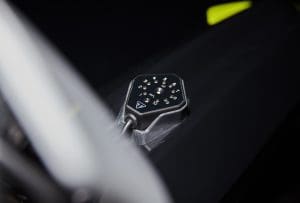
MX Tune Pro wifi module enables you to connect with the bike’s ECU through a downloadable phone app so you can select from a range of pre-programmed maps to customise the bike’s power delivery. $321.59
Performance gripper seat and seat cover. $379.33
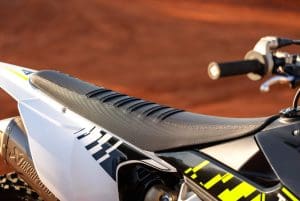
Because the standard bodywork has graphics imprinted in the plastics, there’s a replacement set of panels so you can have your own custom stickers made and fitted. $288.61

SPECIFICATIONS TRIUMPH TF 250-X
ENGINE
Capacity 249.95cc|
Type Single cylinder, DOHC, four valves
Bore & stroke 78mm x 52.3mm
Compression ratio 14.4:1
Cooling Liquid
Fueling EFI, Dell’Orto throttle body
Transmission Five-speed
Clutch Wet, multi-plate, belleville spring
Final drive Chain
PERFORMANCE
Power 35kW (47hp) @ 13,500rpm (claimed)
Torque 28.6Nm @ 9000rpm (claimed)
Top speed 95km/h (est)
Fuel consumption Not measured
ELECTRONICS
Type Not given
Rider aids Traction control, launch control and quickshifter
Rider modes High and low
CHASSIS
Frame material Aluminium
Frame type Backbone
Rake 27.4°
Trail 116mm
Wheelbase 1492mm
SUSPENSION
Type KYB
Front: 48mm upside-down fork, adjustable rebound and compression, 310mm travel
Rear: Monoshock, adjustable rebound and high- and low-speed compression, 305mm travel
WHEELS & BRAKES
Wheels Spoked aluminium
Front: 21 x 1.6 Rear: 19 x 1.85
Tyres Pirelli Scorpion MX32
Front: 80/80-21
Rear: 100/90-19
Brakes Brembo
Front: Single 260mm disc, single-piston caliper
Rear: Single 220mm disc, single-piston caliper
DIMENSIONS
Weight 104kg (wet, claimed)
Seat height 960mm
Width 836mm
Height 1270mm
Length Not given
Ground clearance Not given
Fuel capacity 7L
SERVICING & WARRANTY
Servicing First: 1 hour
Minor: 15 hours
Major: 30 hours
Warranty 30 days
BUSINESS END
Price $14,250
Colour options Triumph Racing Yellow/Black/White
CONTACT www.triumphmotorcycles.com.au

